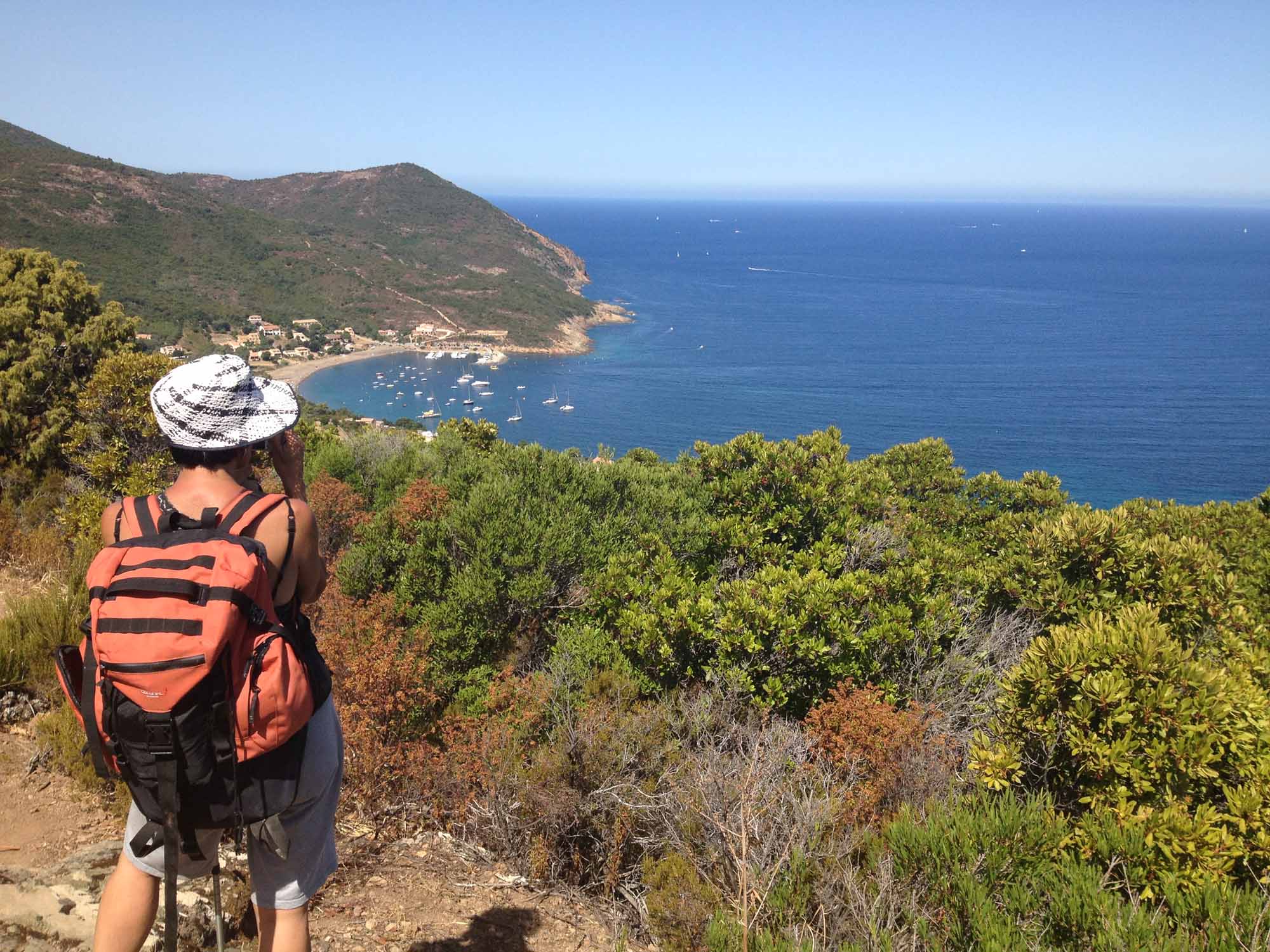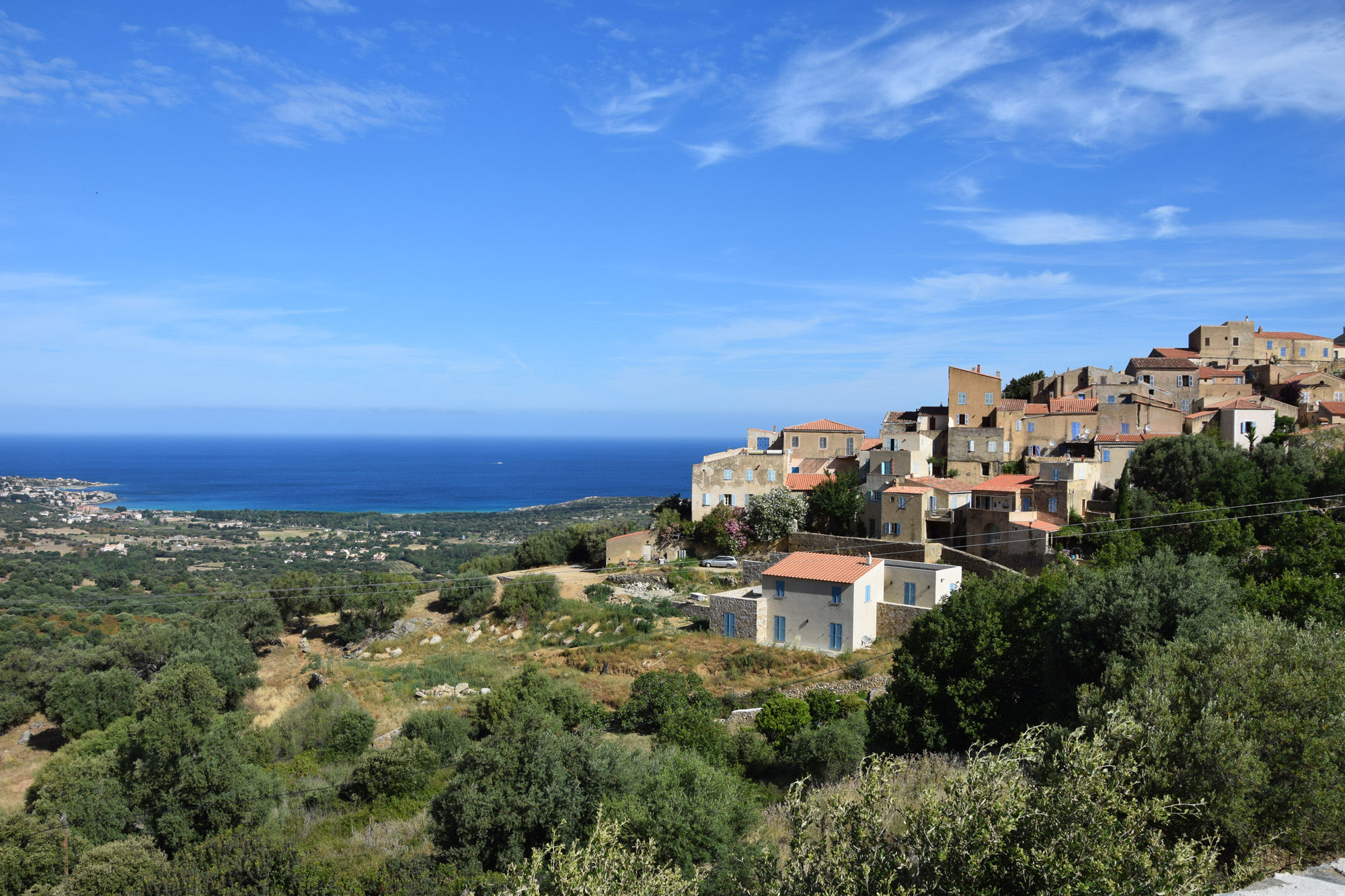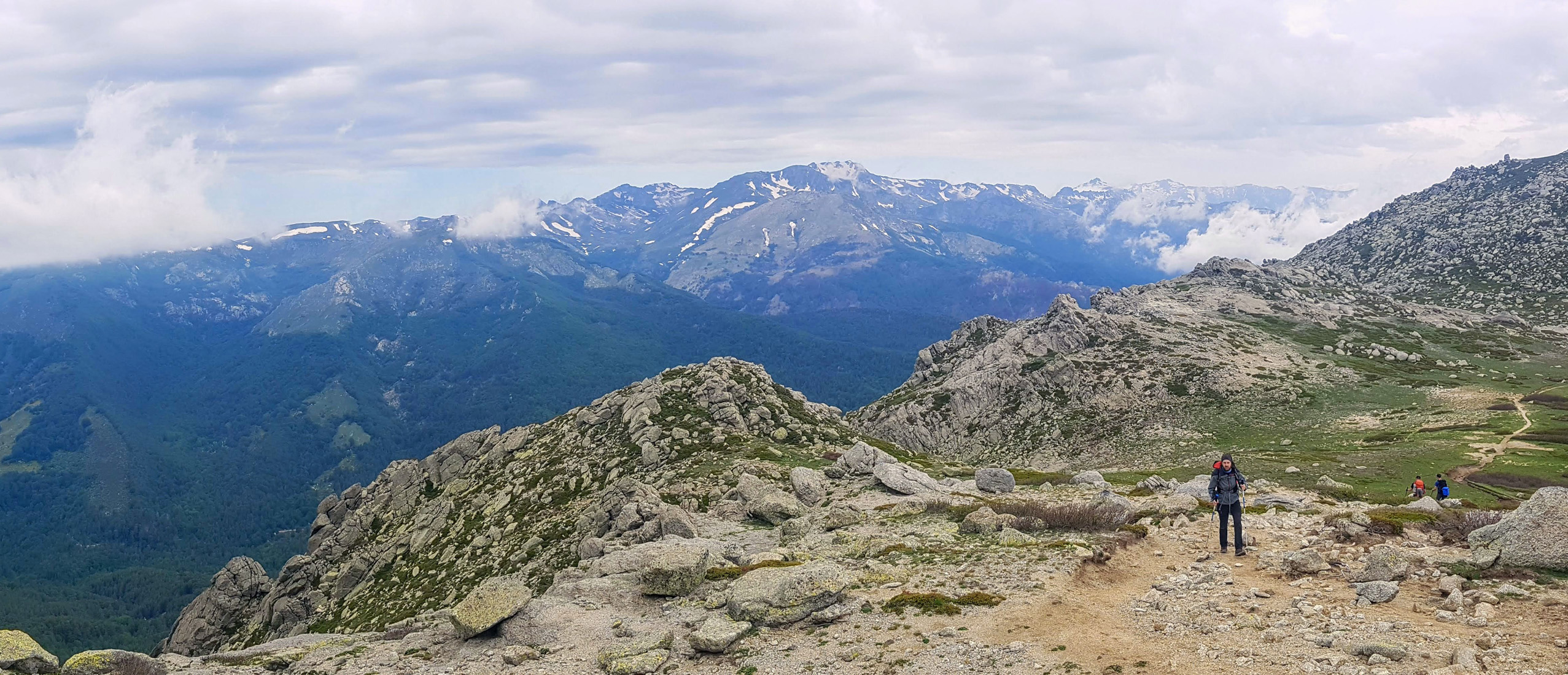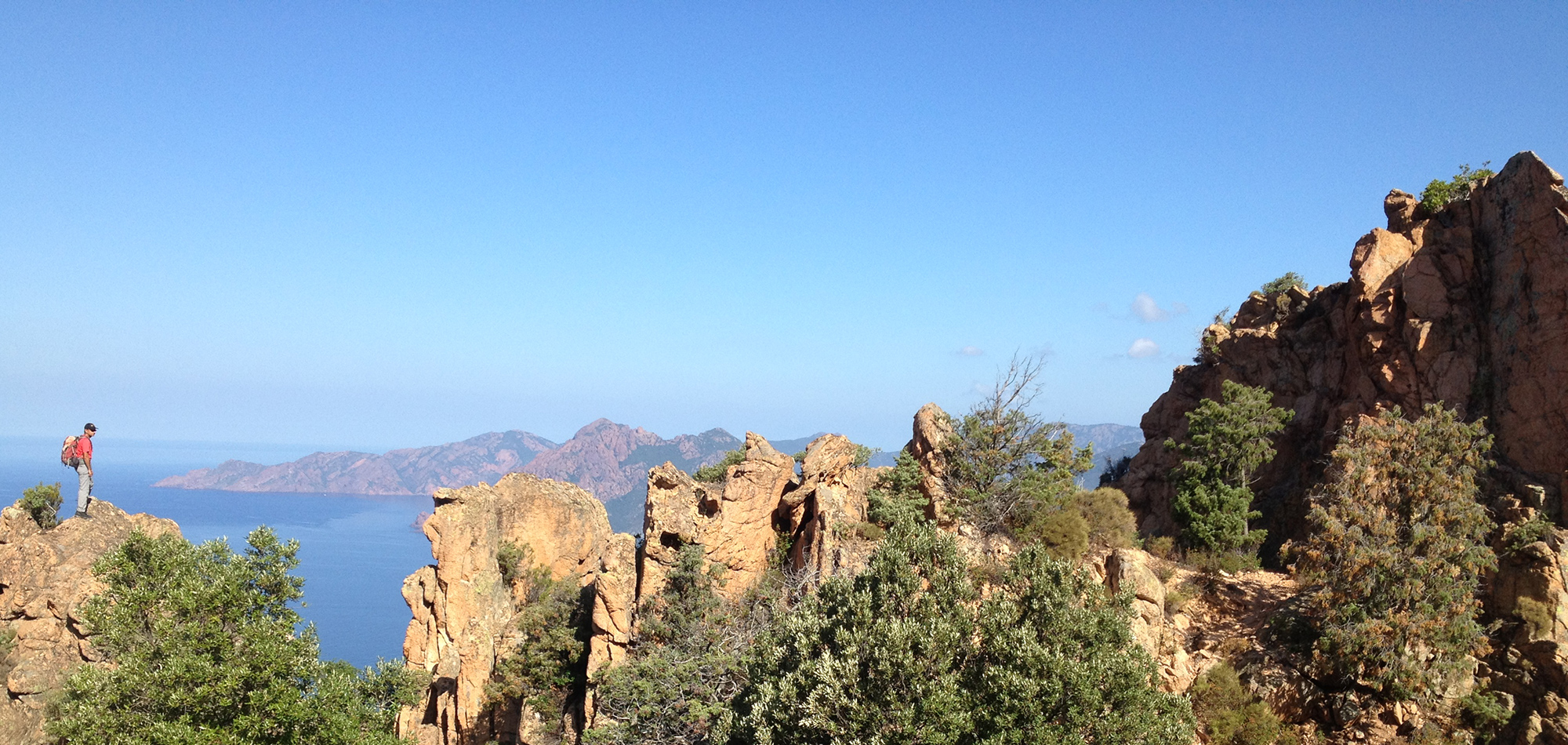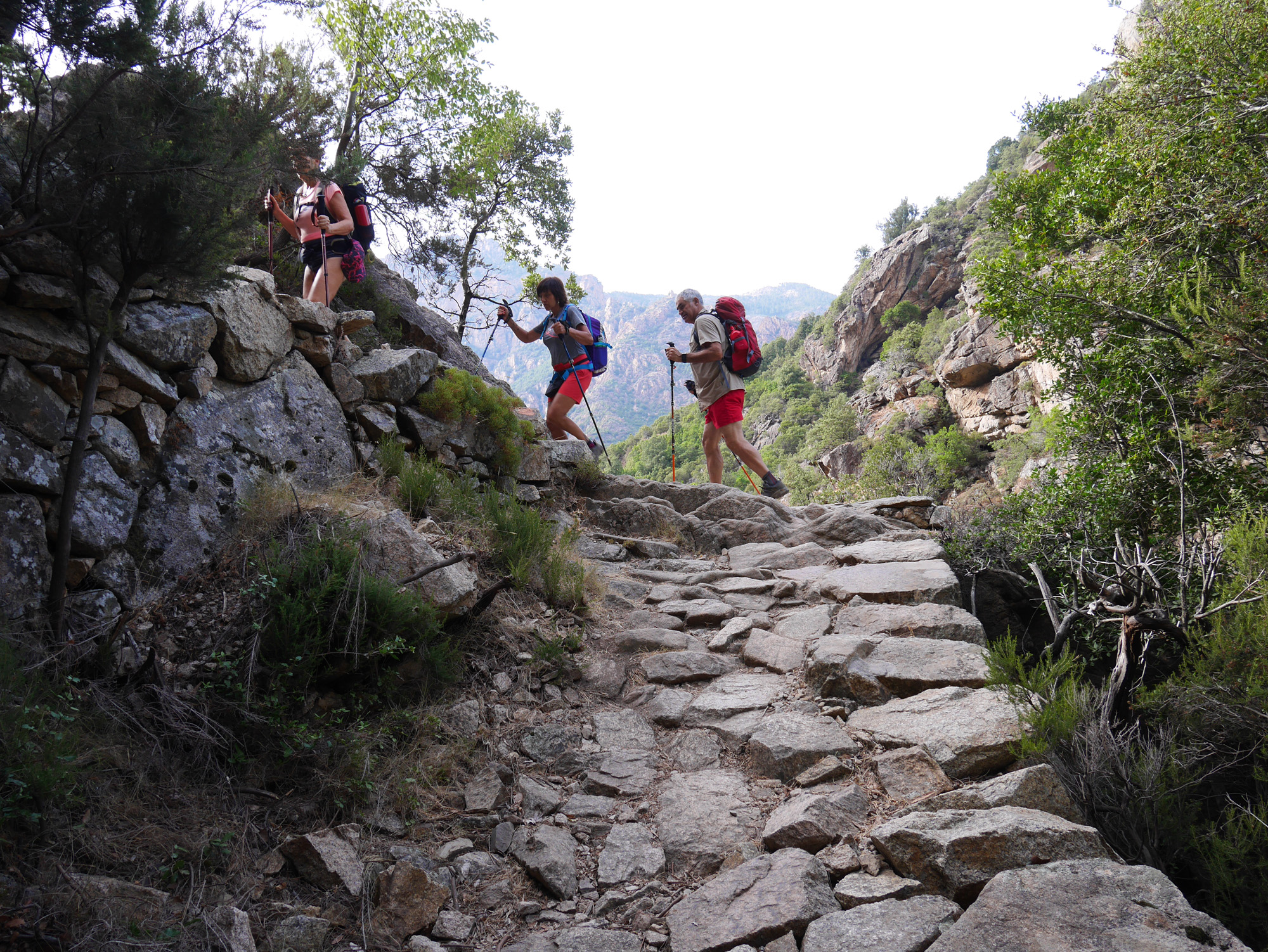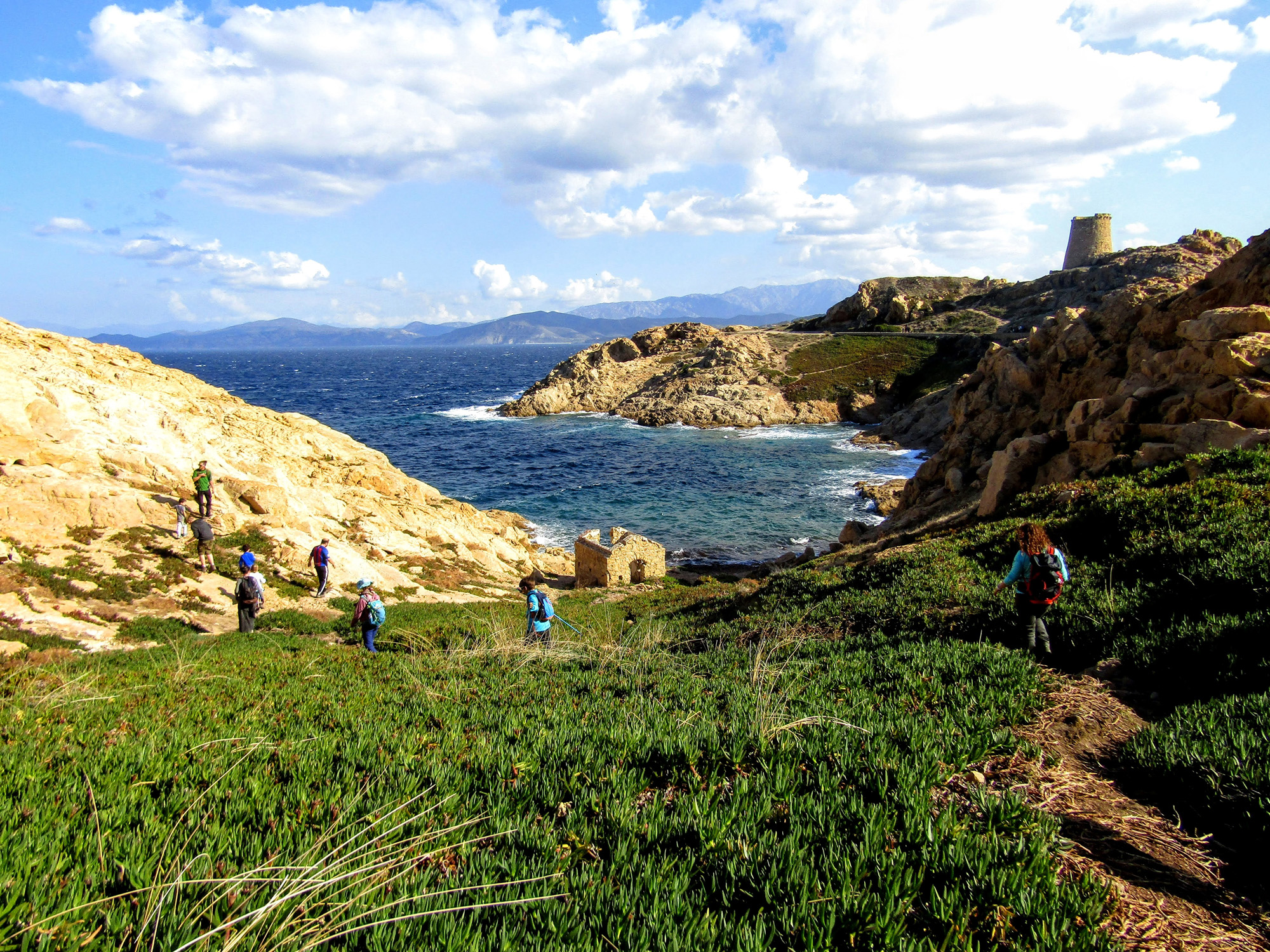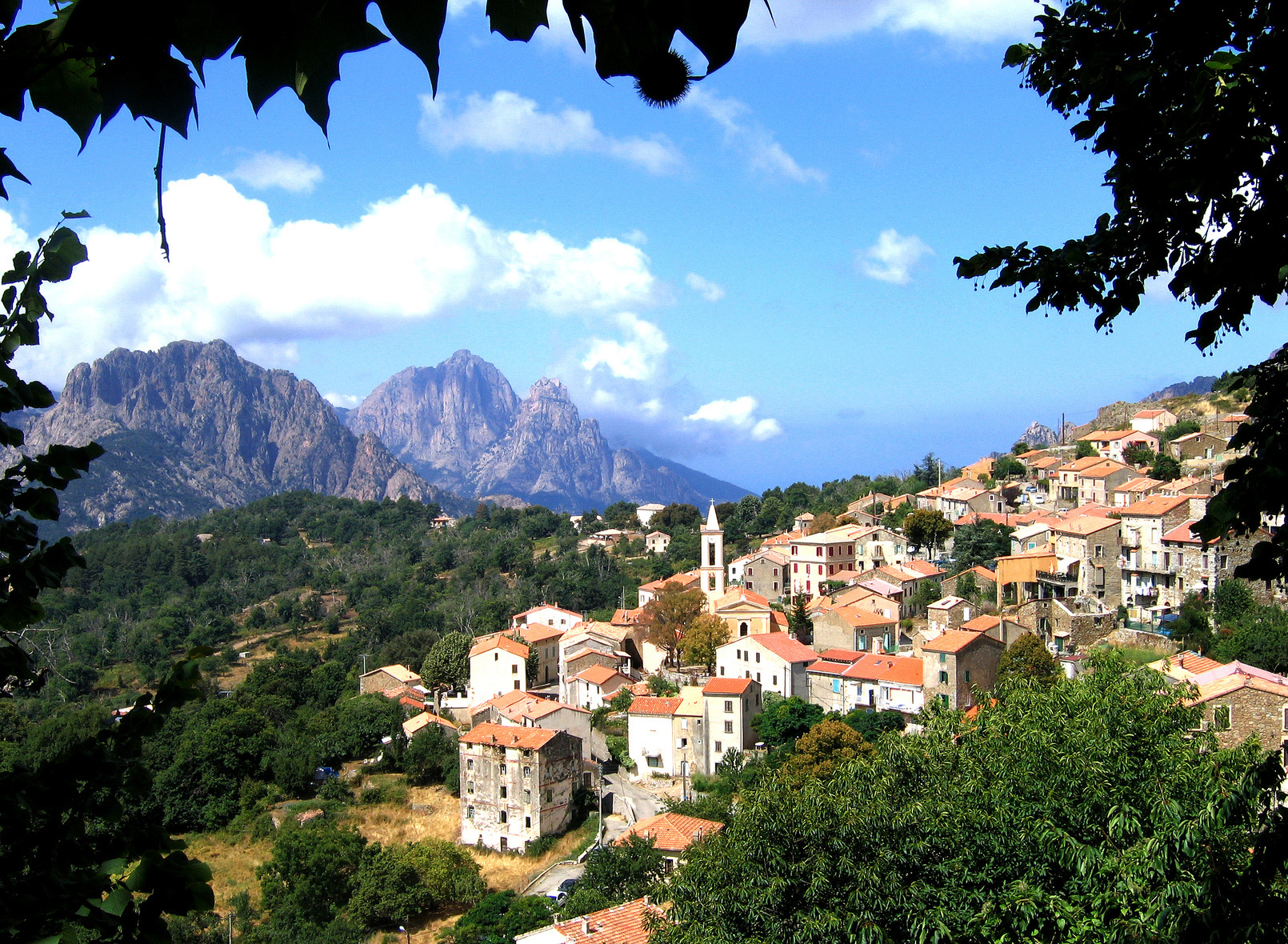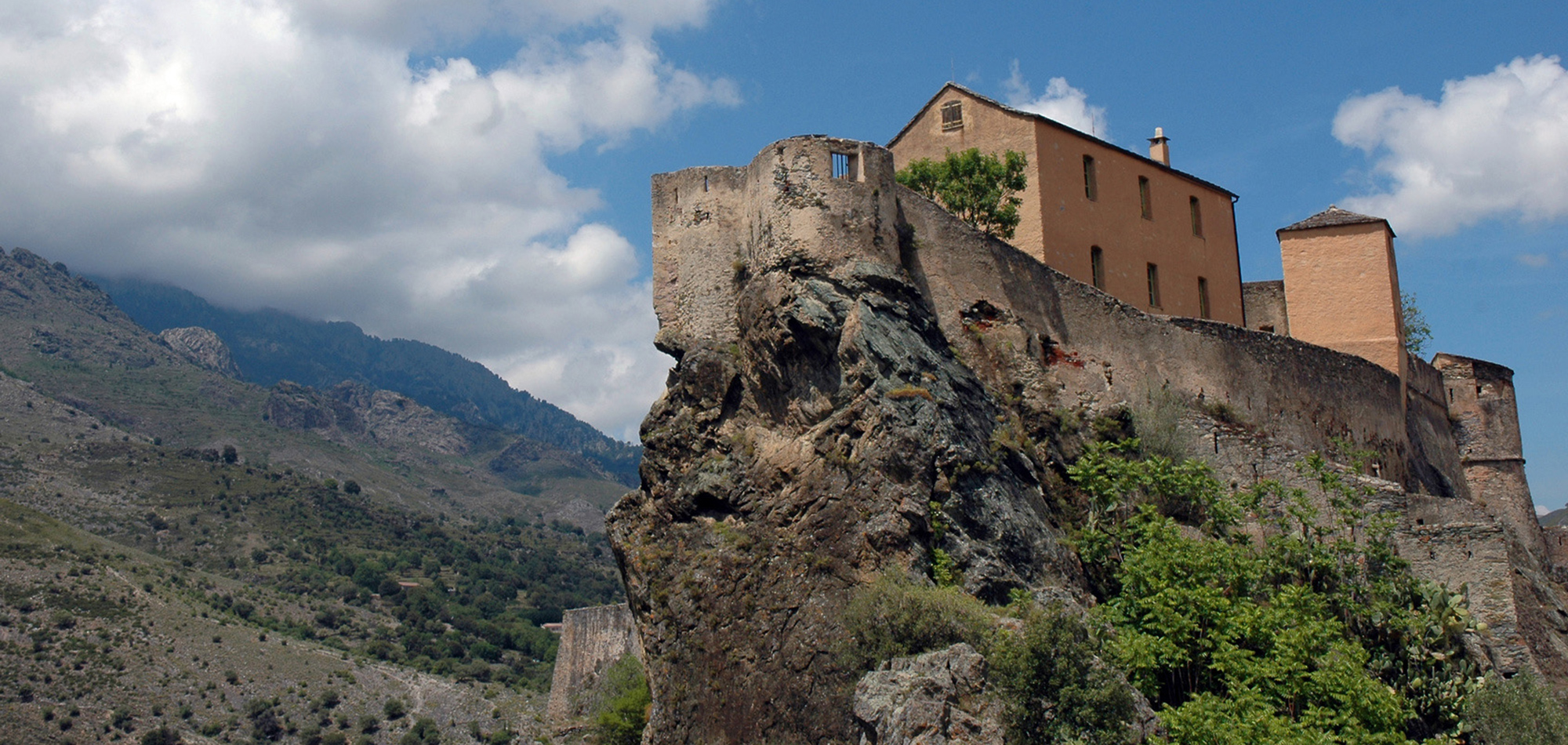
From Corte to Albertacce
From Corte, a transfer takes you to the Scala di Santa Regina gorge, one of the wildest landscapes on the island. This harsh, imposing stone desert is cut off to the north-east by the Niolo river. The road, cut into the rock face in places, overlooks the spectacular gorges. It's in this arid environment, sculpted by erosion and dotted with rocky spires, that the walk to the Accia Bridge begins.
After crossing a tributary on the left bank of the Golo, you'll take the old mule track that predates the road opened in 1889. This historic path once connected Calacuccia and the villages of Niolo with Corte and the eastern plain.
Following in the footsteps of the Niolo shepherds, you'll reach the village of Corscia, then Lozzi, after crossing the magnificent Genoese bridge of Erco. Finally, you'll descend into the heart of the valley to discover Calacuccia and its impressive dam.
From Albertacce to the Col de Vergio
From the village of Albertacce, situated at an altitude of 850 metres, follow a path lined with chestnut trees and old low walls that bear witness to the pastoral activities of the ancestors. Soon you reach the banks of the Golo, the longest river in Corsica, which you cross on the magnificent Genoese bridge of Muricciolu, a relic from the 16th century.
After this crossing, the Mare a Mare Nord gradually climbs through the Valdu Niellu forest, a veritable sanctuary of laricio pines, characteristic of Corsican mountain forests. Along the way, you'll come across several traditional stone sheepfolds, a reminder of the importance of shepherding in this wild and unspoilt region.
The last stretch of the route becomes more open, with spectacular views of Paglia Orba (2,525 m) and Monte Cinto (2,706 m), the emblematic peaks of the island. You then rejoin the GR20 at the Radule waterfall, before reaching the village of Vergio at an altitude of 1,400 metres.
From the Col de Vergio to Cristinacce
The route follows the GR20 Nord through the Valdu Niellu forest and takes you along a circular path to the Col Saint-Pierre, 1,452 metres above sea level. Here you'll find a small oratory, which has been there since time immemorial, to mark the passage of men accompanied by their animals. They came from the villages of Cristinacce, Marignana, Evisa, Ota and Renno in search of rich pastures, but also to reach the Niolu region. At the end of this splendid descent into the Tavulella Valley, you'll reach the Gîte in the hamlet of Cristinacce, with its old granite houses.
From Cristinacce to Ota
A forest track quickly leads to the small abandoned hamlet of Tassu, just off the main road. This authentic place is a testimony of the old Corsican way of life in the mountains and of the pastoral history of the region. The path then gradually climbs through a forest of oak and chestnut trees, a remnant of the region's former chestnut flour production.
Soon you'll reach Evisa, at 850 metres above sea level, often considered the gateway to the Spelunca Gorges. This lively village, in the heart of a thousand-year-old chestnut grove, is the ideal place to stop and discover local specialities, including Corsican charcuterie and chestnut-based products.
From Evisa, the trail begins a long descent towards Ota, crossing the spectacular Gorges de la Spelunca, an impressive natural site. You'll cross several 16th-century Genoese bridges, including the Pont de Zaglia, a listed monument. These bridges bear witness to the importance of the old mule tracks that once linked the interior of the island to the coastal villages.
From the Col de Vergio to Ota
From the Col de Vergio, you begin the descent into the Aïtone forest. The path runs alongside the Aïtone river and its large boulders, some of which, hollowed out by the force of the water, form veritable natural pools, including the famous Aïtone natural pools. Once you've reached the village of Evisa, you'll drop down into the magnificent Spelunca gorges to reach the village of Ota.
End of your trip in Ota
Our services end after breakfast in Ota. You can take the local bus in the morning (at your own expense) to Ajaccio, or continue your stay with a seaside extension to Porto.
Programs have been drawn up according to the latest information available at the time of writing: imponderables are always possible and situations beyond our control may alter the course of the program.












